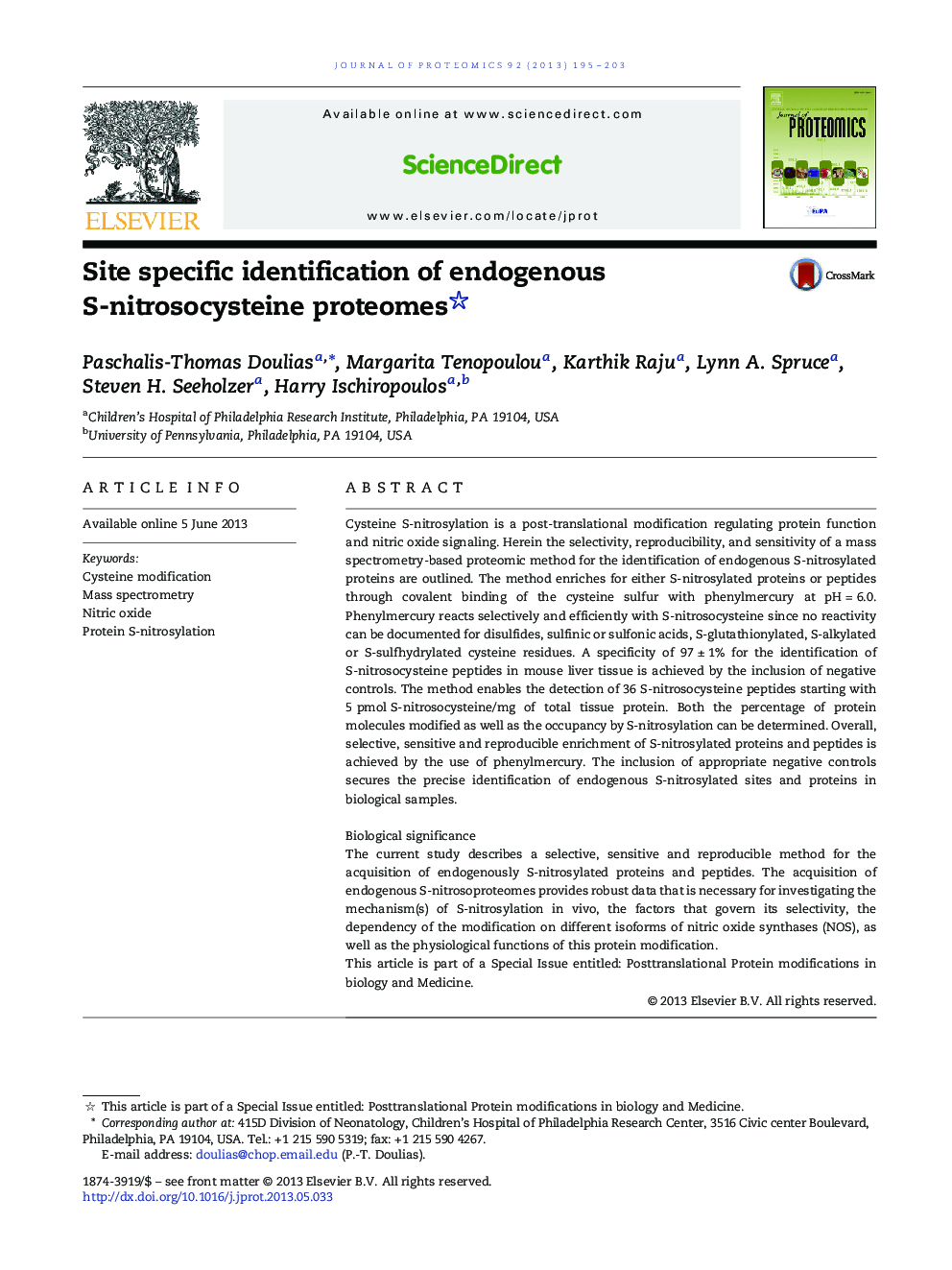| Article ID | Journal | Published Year | Pages | File Type |
|---|---|---|---|---|
| 1225487 | Journal of Proteomics | 2013 | 9 Pages |
•Selective and efficient enrichment for S-nitrosocysteine proteins and peptides by phenylmercury•Site specific identification of S-nitrosylated peptides by mass spectrometry•Work-flow, negative controls and implementation of the method in complex biological samples
Cysteine S-nitrosylation is a post-translational modification regulating protein function and nitric oxide signaling. Herein the selectivity, reproducibility, and sensitivity of a mass spectrometry-based proteomic method for the identification of endogenous S-nitrosylated proteins are outlined. The method enriches for either S-nitrosylated proteins or peptides through covalent binding of the cysteine sulfur with phenylmercury at pH = 6.0. Phenylmercury reacts selectively and efficiently with S-nitrosocysteine since no reactivity can be documented for disulfides, sulfinic or sulfonic acids, S-glutathionylated, S-alkylated or S-sulfhydrylated cysteine residues. A specificity of 97 ± 1% for the identification of S-nitrosocysteine peptides in mouse liver tissue is achieved by the inclusion of negative controls. The method enables the detection of 36 S-nitrosocysteine peptides starting with 5 pmol S-nitrosocysteine/mg of total tissue protein. Both the percentage of protein molecules modified as well as the occupancy by S-nitrosylation can be determined. Overall, selective, sensitive and reproducible enrichment of S-nitrosylated proteins and peptides is achieved by the use of phenylmercury. The inclusion of appropriate negative controls secures the precise identification of endogenous S-nitrosylated sites and proteins in biological samples.Biological significanceThe current study describes a selective, sensitive and reproducible method for the acquisition of endogenously S-nitrosylated proteins and peptides. The acquisition of endogenous S-nitrosoproteomes provides robust data that is necessary for investigating the mechanism(s) of S-nitrosylation in vivo, the factors that govern its selectivity, the dependency of the modification on different isoforms of nitric oxide synthases (NOS), as well as the physiological functions of this protein modification. This article is part of a Special Issue entitled: Posttranslational Protein modifications in biology and Medicine.
Graphical abstractFigure optionsDownload full-size imageDownload high-quality image (96 K)Download as PowerPoint slide
